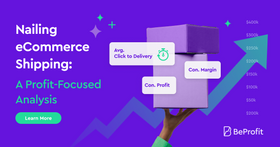Shopify Omnichannel Strategies to Boost Your Marketing
Published June 28, 2022

Omnichannel strategies are, in a nutshell, marketing strategies that build your brand presence on a variety of channels. This presence is online and it’s also physical. A good example of an omnichannel marketing strategy is a restaurant. You have a website, you can order online, using QR codes or on WhatsApp, and then you can physically visit, sit, and eat. Multiple channels, same brand, increased brand experience and awareness.
Benefits of Omnichannel Strategies for Your Shopify Store
Omnichannel strategies can benefit your Shopify store in three ways—the 'triple S' of omnichannel benefits:
- Support When you use channels like SMS, email, and web push notifications so that they work together and support each other, you can send integrated abandoned cart reminders and other retargeting campaigns seamlessly.
- Sales This harmonizing of channels helps you to drive more sales for your store. You can boost your conversions with Instagram, Facebook, TikTok, or any other platform.
- Satisfaction It will increase your customer satisfaction because you are finding your customers where they are. Customer satisfaction also means customer retention.
How Do Omnichannel Strategies Work?
Omnichannel strategies communicate in these four ways to boost sales, as well as establish and grow your brand in the market:
- Uniformed communication Strategies across all channels need the same messaging, tone, and look and feel to be able to promote brand consistency. A consistent brand is a trusted brand.
- Automated communication Timing of communication is key. It is critical to have an automated communication marketing strategy that uses metrics and data collected. If you catch your customer at the right time, and on the right channel, your sales will be optimized.
- Personalized communication This gives you the opportunity to create a link between you and your customer. The more personalized the communication is, the higher the chance of it being read.
- Data-driven communication This will help you optimize the management of all your customers’ touch-points. Data-driven communication lets you speak to your customer at a point that needs a positive nudge for them to continue instead of abandoning the sale.
How to Build a Successful Omnichannel Strategy
To build a successful omnichannel strategy, you need to go through these six important steps. Depending on where your brand is, you may be able to skip a step or two:
1. Build a Consistent, Professional Brand
Do you have a logo, slogan, professional look, and feel? The point of omnichannel marketing is to give your customers a three-dimensional experience of your brand. If your look and feel are not consistent, powerful, and professional, there will be a disconnect between channels. All top e-commerce agencies do this, and they do it well!
2. Understand Your Customer
It is essential to use your metrics to get a good idea of who your customer is. For example, you won’t sell skateboards to people who are in their 50s. And, you also won’t attract many new customers from a professional platform like LinkedIn. Getting to know your customers will help you increase organic traffic, and, as a result, boost sales.
3. Pick Your Channels Carefully
Once you know your customer, you need to understand which channels are most appropriate for them. Put meaningful e-commerce advertising together for your chosen channels so that your strategy is intentional and, therefore, appropriate.
4. Implement Omnichannel Payments
To give your customers a seamless and efficient experience, they need seamless payment options. Let’s say they see an advert on Facebook and they decide to buy a product. Months down the line, they see a product on Instagram; it would make the sale so much easier for them if their details are all loaded from the Facebook sale. It’s about making it as easy as possible for your customer to buy your product.
Omnichannel marketing is about surrounding your customer with your brand in a way that subtly reminds them that your brand is strong and omnipresent. Just remember, there is a big difference between digital marketing and e-commerce. Digital marketing is a domain that focuses on marketing products and services using digital platforms. E-commerce, on the other hand, is all about buying and selling products or services using the internet. The more you understand the digital online world of marketing, the faster you will grow your business and increase your return on investment. It’s all about staying lightyears ahead of the pack!







